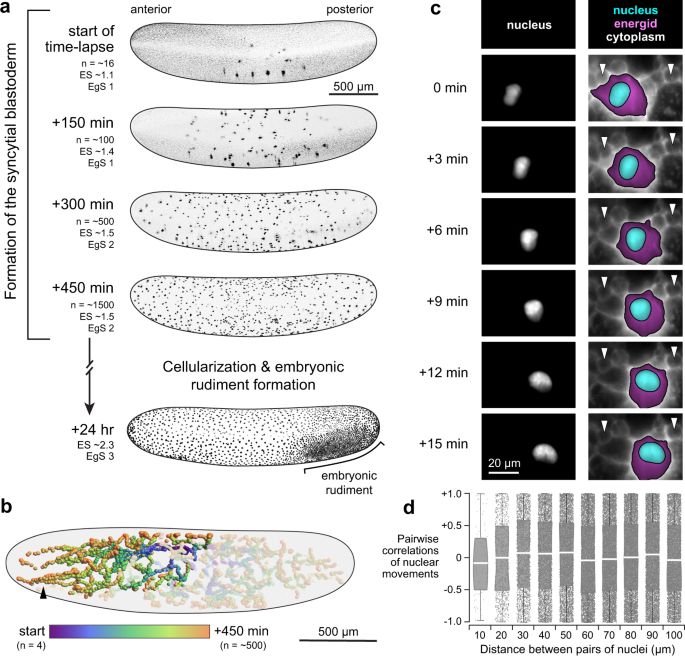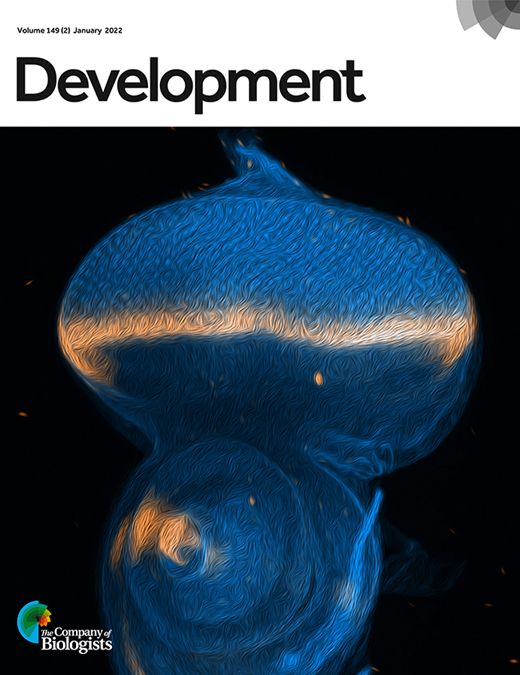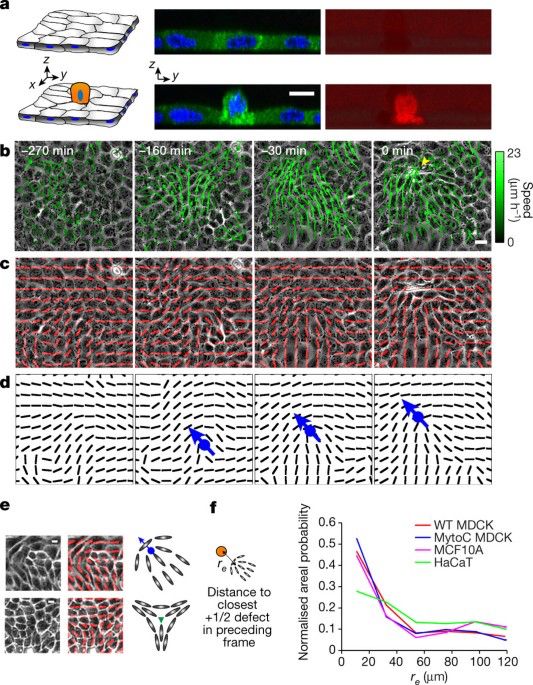Major pet conference peeve - speakers not speaking to time. It shortens breaks, reduces chances to engage ECRs and sets a bad precedent. Typically the bigger the name, the worse the timing.
27.03.2025 10:40 — 👍 9 🔁 0 💬 1 📌 1
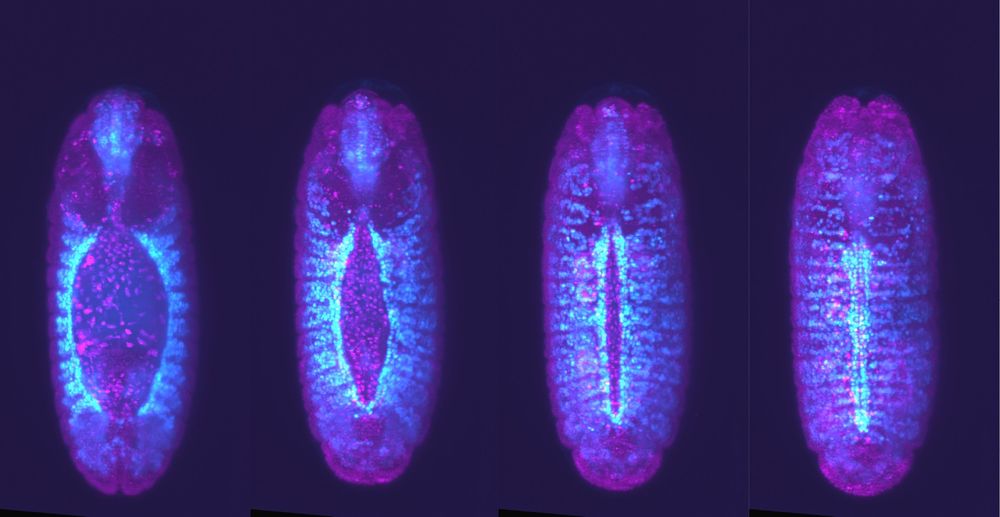
Fly embyro with cells labeled to show heart formation. The heart (cyan) forms from two distant regions of the embryo (far left). These regions migrate to the embryo midline, where they fuse into a tube to make the first heart structure (far right). Precise alignment and pairing of these cells are crucial for proper heart development.
Cells “speed date” to find their perfect neighbors when forming tissues. This marks a pivotal step in creating functional organs, like in this early heart development illustrated in a fly larvae.
Learn more: www.cell.com/biophysj/ful...
@timesaunders.bsky.social
@biophysj.bsky.social
12.03.2025 20:24 — 👍 27 🔁 5 💬 0 📌 0
👀 Looking for a Master Program in Physics of Life? Preferably free? Maybe in a collaborative and interdisciplinary environment? Check this out👇🏻
13.03.2025 11:05 — 👍 8 🔁 2 💬 0 📌 0
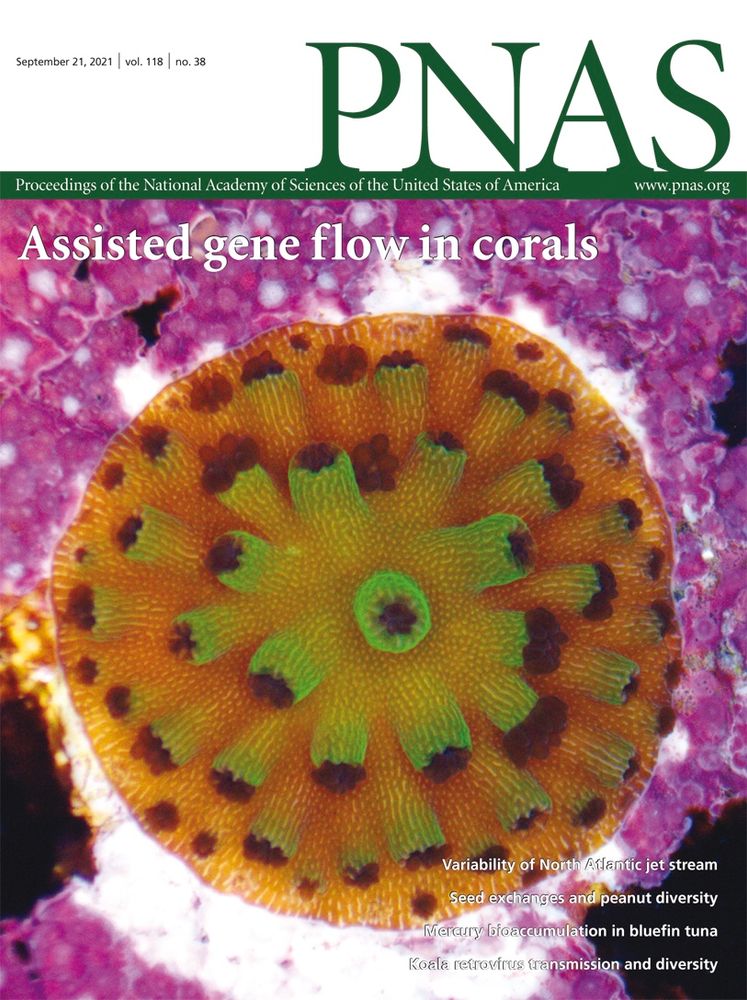
Geometry of gene regulatory dynamics | PNAS
Embryonic development leads to the reproducible and ordered appearance of complexity
from egg to adult. The successive differentiation of different...
There’s been exciting work recently linking ideas from topology to biological systems. This has ranged from bird flocking (www.pnas.org/doi/full/10....), to gene networks (www.pnas.org/doi/full/10....), and now how nuclei pack in the Drosophila blastocyst (www.nature.com/articles/s41...).
13.03.2025 11:02 — 👍 17 🔁 5 💬 1 📌 0
Enjoyed doing this interview. Hope it's helpful for a more general audience.
12.03.2025 20:17 — 👍 1 🔁 0 💬 1 📌 0
ScienceDirect.com | Science, health and medical journals, full text articles and books.
Latest lab paper is out :)
eur01.safelinks.protection.outlook.com?url=https%3A...
With Sham Tlili, we show that a surprisingly simple equilibrium physics model can explain the highly dynamic process of cell matching in the heart.
12.03.2025 15:06 — 👍 7 🔁 3 💬 1 📌 0
#ZebrafishMeeting featuring @nicolettapetridou.bsky.social & @rashmi-priya.bsky.social
21.01.2025 07:00 — 👍 6 🔁 1 💬 0 📌 0
Read about my amazing PhD student Ryan. Many thanks to CoB for hosting him for 3 months
16.12.2024 17:25 — 👍 9 🔁 3 💬 0 📌 0
A wonderful day. Thanks so much for the invitation
13.12.2024 20:23 — 👍 1 🔁 0 💬 0 📌 0
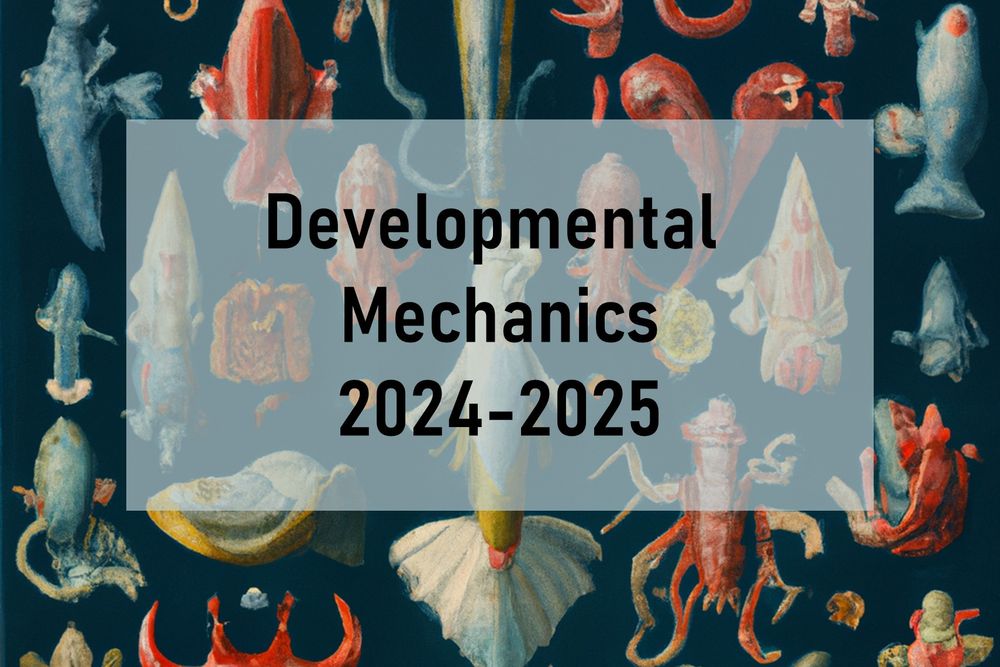
Dev Mech 2024-25 logo
Since I have so many new friends 😄, I thought I'd advertise this. Together with @pritiagarwal.bsky.social and Lance Davidson, we run a Developmental Mechanics seminar series on Zoom (originally started by Ronen Zaidel-Bar). This coming Thursday, we have our last session for 2024. Join us!!
19.11.2024 16:53 — 👍 86 🔁 43 💬 1 📌 4
Just discovering how clunky Bluesky is for this :(
17.11.2024 20:31 — 👍 1 🔁 0 💬 4 📌 0
Our collaborators - the Weil lab - primarily focused on the first question. They revealed that localisation of bicoid mRNA localisation to P bodies inhibits translation. Chemically releasing bicoid from the P bodies resulted in translation in the oocyte…
17.11.2024 20:30 — 👍 0 🔁 0 💬 0 📌 0
We generated a Bicoid::Suntag reporter line. Importantly, this could address two important questions: (i) is bicoid translated in the oocyte, and if not, what is regulating this process?; (ii) where and when is bicoid translated in the embryo? (20)
17.11.2024 20:30 — 👍 1 🔁 0 💬 0 📌 0
We were motivated by the development of SunTag (PMID: 25307933), especially its application to the living Drosophila embryo by the Mounia lab (PMID: 33927056). (19)
17.11.2024 20:29 — 👍 0 🔁 0 💬 2 📌 0
It has remained an open question as to precisely when and where bicoid mRNA is translated. If bicoid mRNA is not translated in the oocyte, what is the mechanism? This motivated us to revisit the “S” part of the SDD model. (18/22)
17.11.2024 20:29 — 👍 0 🔁 0 💬 1 📌 0
These direct measures of motion reveal that the “diffusive” part of the SDD model needs adaptation (e.g., spatial and temporal change), but Bicoid does move through the embryo sufficiently fast to generate a gradient. (18/22)
17.11.2024 20:29 — 👍 0 🔁 0 💬 1 📌 0
With Thorsten Wohland, we used FCS at multiple locations and time points on Bicoid. We demonstrated different rates of diffusivity in the anterior and posterior regions (PMID: 38345326). (17/22)
17.11.2024 20:28 — 👍 1 🔁 0 💬 1 📌 0
However, these measurements were essentially averaging over the whole system – what is happening with Bicoid at more local (e.g., within a nuclear domain) scales? (16/22)
17.11.2024 20:26 — 👍 0 🔁 0 💬 1 📌 0
While all the models proposed can generate an exponentially-decaying profile, they all made different predictions for how old Bicoid would be at different locations. Only the SDD model was consistent with the overall behaviour of the protein age. (15/22)
17.11.2024 20:26 — 👍 0 🔁 0 💬 1 📌 0
During my post-doc and into my own lab we developed a Bicoid-timer reporter. By tagging Bicoid with two fluorescent proteins with different folding rates, we could effectively measure the age (i.e., ratio of the two fluorophore signals) of Bicoid at different locations (PMID: 30181144). (14/22)
17.11.2024 20:25 — 👍 0 🔁 0 💬 1 📌 0
Fluorescence correlation spectroscopy (FCS) of Bicoid::eGFP revealed that the dynamics were more complicated than inferred from FRAP. In particular, an effective diffusion coefficient of around 7um2s-1 (PMID: 20712981). This measurement was more in line with expectations from the SDD model. (13/22)
17.11.2024 20:25 — 👍 2 🔁 0 💬 1 📌 0
The Gregor lab optimised fluorescent in situ hybridisation (PMID: 21390295) to reveal “>90% of all bicoid mRNA is continuously present within the anterior 20%.” They also concluded that Bicoid is rapidly removed in nuclear cycle 14, after patterning is set. (12/22)
17.11.2024 20:24 — 👍 0 🔁 0 💬 1 📌 0
Therefore, we see that up to 2010 there were still major questions regarding pretty much every part of how the Bicoid gradient formed, and this cast major doubts over the validity of the SDD model. (11/22).
17.11.2024 20:23 — 👍 0 🔁 0 💬 1 📌 0
Tweetorial continued -unable to post more on the previous one:
(ii) Bicoid could be produced in the oocyte, leading to early distribution of Bicoid (PMID: 28296637). (iii) Bicoid may not need to be degraded;dilution by nuclei could be sufficient to generate a gradient (PMID: 18001703) (10/22)
17.11.2024 20:23 — 👍 1 🔁 0 💬 0 📌 0
Therefore, we see that up to 2010 there were still major questions regarding pretty much every part of how the Bicoid gradient formed, and this cast major doubts over the validity of the SDD model. (11/22).
17.11.2024 20:21 — 👍 0 🔁 0 💬 0 📌 0
(ii) Bicoid could be produced in the oocyte, leading to early distribution of Bicoid (PMID: 28296637). (iii) If the diffusivity is small enough, then Bicoid may not need to be degraded; dilution by nuclei would be sufficient to generate a gradient on the relevant time scales (PMID: 18001703) (10/22)
17.11.2024 20:20 — 👍 0 🔁 0 💬 0 📌 0
Quantitative Developmental Biology @Duke
PI @ibps.bsky.social. Neurodevelopmental mechanics - Olfactory placode morphogenesis - Tissue interactions - Axon growth - ECM - Zebrafish
https://www.ibps.sorbonne-universite.fr/en/research/development-adaptations-and-aging/mechanics-neuronal-development
Excited about animal and synthetic morphogenesis, light-sheet microscopy, and quantitative biology
Cell and developmental biologist, Drosophilist, renal organoids & kidney development, cytoskeleton, cell shape, supracellular coordination in morphogenesis, Cambridge, Berlin, Heidelberg, Alto, mum, views are my own… she/her
The Zebrafish Information Network (ZFIN) is the database of genetic and genomic data for the zebrafish as a model organism. ZFIN provides a wide array of expertly curated, organized and cross-referenced zebrafish research data.
Find us at https://zfin.org
Biophotonics, Biophysics & Innovation
@KITkarlsruhe
Biophysics / Cell Migration / Active matter / Mechanobiology
https://mpzpm.mpg.de/research/benoit-ladoux
https://ladoux-mege-lab.cnrs.fr
2025 Schmidt Science Fellow
CDB UCL London and Gurdon Institute Cambridge
Wilson, Simons and Norden labs
Developmental, Systems and Synthetic Biology
Prev: Briscoe, Crick Institute; Zernicka-Goetz and Thomson, Caltech; Banerjee and Goehring, UCL
Reprogramming cells for fun and to create embryo models in the tropical Greater Bay Area
https://www.jose-silva-lab.com/ 🇵🇹🇨🇳🇬🇧
Guangzhou/Cantāo 🌴☀️, China中国
Systems Biology researcher at Imperial College interested in nonlinear & stochastic mechanisms. Tolerable clarinet player & painter http://instagram.com/twopiruben 🏳️🌈
Our biologists, physicists, computer scientists & mathematicians investigate the evolution & development of Life’s complexity 🐊 🐍 🦎 @genevunige.bsky.social
Scientist + Teacher UvA/Amsterdam | Cells | Molecules | Microscopy | Fluorescent Proteins | Biosensors | Lifetime imaging | Open Science | dataViz | R | web apps
Homepage: https://joachimgoedhart.github.io/
DataViz Apps: https://huygens.science.uva.nl
Head of Genome Biology Dept @EMBL,
Scientist, Principal investigator, Professor
Exploring genome regulation during development,
and everything to do with enhancers.
3D genome, chromatin topology,
cell_fate, embryonic Development,
Single Cell genomics
Developmental biologist, currently thinking about developmental timing
Assistant Professor of Anatomy at University of Puerto Rico - School of Medicine. My lab studies sensory systems and behavior in fish 🐟 Pop culture aficionado 🏳️🌈🇵🇷 (he/him)
duke dscb phd student / ambassador @prelights.bsky.social & founder @howwetalkabtsci.bsky.social / prev. NICHD postbac / UChicago '23, she/her, views my own 🇪🇨🇺🇸
Cell biologist - PhD. What’s a cell? How does it really work? Why do we care?
Loving running, reading, microscopy and coffee.
Opinions are my own. fadelvalle.github.io
Donlin-Asp Lab
University of Edinburgh
SysBio PhD Student in the Petsalaki Group (Whole Cell Signalling) at EMBL-EBI and Cambridge University (Churchill College) | 🇩🇪 BS | 🇸🇪 MS | https://benjamindominikmaier.github.io/.
Highlighting preprints for preLights: https://shorturl.at/8MPdH
Assistant Professor at Aarhus University, Denmark. Working with Zebrafish to understand the gut-brain axis

